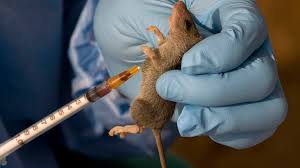Ngozi James
The Nigeria Centre for Disease Control (NCDC)has activated the national multi-sectoral and multi-disciplinary Lassa fever Emergency Operations Centre (EOC) to respond to Lassa fever outbreak after the country witnessed a surge in confirned cases.
The Centre said the decision to activate the emergency response also comes after joint risk assessment with partners and sister agencies.
As at 23rd January 2022, data from the NCDV shows that a total of 115 confirmed cases with 26 deaths-a case fatality ratio of 22.6 percent have been reported. These cases were reported 30 Local Government Areas (LGAs) across eleven States.
The reports in weeks 1 and 2 show the highest number of confirmed cases recorded in the last four years for the same period. For instance, in the first week of 2022, Nigeria recorded 48 cases compared to the 9 cases recorded in week one of 2021.
Lassa fever is an acute viral haemorrhagic illness transmitted to humans through contact with food or household items contaminated by rodents infected with Lassa fever virus. Person-toperson transmission can also occur, particularly in a hospital environment with inadequate infection control measures.
Like several other countries in West Africa, the disease is endemic in Nigeria and is often recorded during the dry season, often between November and May.
Lassa fever presents initially like any other febrile illness such as malaria. Its symptoms include fever, headache, sore throat, general body weakness, cough, nausea, vomiting, diarrhoea, muscle pains, chest pain, and in severe cases, unexplainable bleeding from ears, eyes, nose, mouth, and other body openings.
The time between infection and the appearance of symptoms of the disease is 3 to 21 days. Early treatment and diagnosis increase the chances of survival.
To reduce the risk of the spread of Lassa fever, the NCDC has advised Nigerians to; ensure proper environmental sanitation; dispose of refuse properly, store foodstuff like rice, garri, beans, corn/maize, etc in containers that are well covered with tight-fitting lids, avoid bush burning, eliminate rats in homes and communities by setting rat traps and other means, and practice good personal hygiene by frequent washing hands with soap under running water /or use of hand sanitisers when appropriate.
The Centre urges Nigerians to visit the nearest health facility if they notice any of the signs and symptoms of Lassa fever, and avoid self-medication.
It also advised health care workers to practice standard precautions and to maintain a high index of suspicion at all times.
Since 2016, the NCDC said it has worked hard to improve diagnostic capacity for the disease. The Centre informed that it currently, seven laboratories can conduct confirmatory tests for Lassa fever in Nigeria and are coordinated by the NCDC National Reference Laboratory (NRL). This has improved active case detection for the disease.

